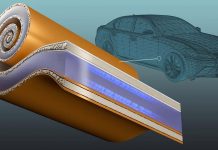
Imagine a world where we can produce clean energy without harming our planet.
That dream is getting closer to reality, thanks to a groundbreaking discovery in producing green hydrogen.
Researchers from the Italian Institute of Technology in Genoa and their spin-off company, BeDimensional S.p.A., have developed a new system that could make creating green hydrogen both efficient and affordable.
Hydrogen is a clean energy source, but how we make it matters. Currently, most hydrogen comes from a process involving methane, a fossil fuel, which releases harmful carbon dioxide into the air.
This type of hydrogen, known as “gray” or “blue” hydrogen, isn’t ideal for our environment. To truly benefit our planet, we need “green” hydrogen, which is made without releasing any harmful emissions.
The key to green hydrogen is how we split water into hydrogen and oxygen. This process needs a lot of energy, and making it efficient and cheap has been a challenge.
Enter the team from Genoa, who have found a way to do this using sunlight and a special metal called ruthenium.
Ruthenium is a precious metal, similar to platinum but much cheaper.
The team used tiny particles of ruthenium in their system, making the process of splitting water more efficient. They powered their setup with renewable energy, like solar panels, to ensure the entire process is environmentally friendly.
Unlike traditional methods that use more expensive metals like platinum or iridium, the use of ruthenium drastically reduces costs. They only need a tiny amount of ruthenium for their system, making it a practical solution for large-scale production.
Their research isn’t just theoretical. The team has tested their system under real-world conditions and used computer simulations to understand exactly how the ruthenium particles work at a molecular level.
The results are promising: their system is not only efficient but also competitive with current technologies in the market.
The beauty of this new system is in its simplicity and history. Alkaline electrolyzers, the technology used here, have been around for decades and were even part of the Apollo 11 moon mission.
The researchers have taken this well-trusted technology and supercharged it with their ruthenium-based solution, creating a robust and long-lasting way to produce green hydrogen.
Looking ahead, the team is excited to scale up their technology. They envision large electrolyzers powered by renewable energy sources like solar panels, producing green hydrogen on a scale large enough to make a real difference in our energy landscape.
This discovery isn’t just a win for green hydrogen production. It’s a hopeful glimpse into a future where clean, sustainable energy is the norm, helping us take better care of our planet.



